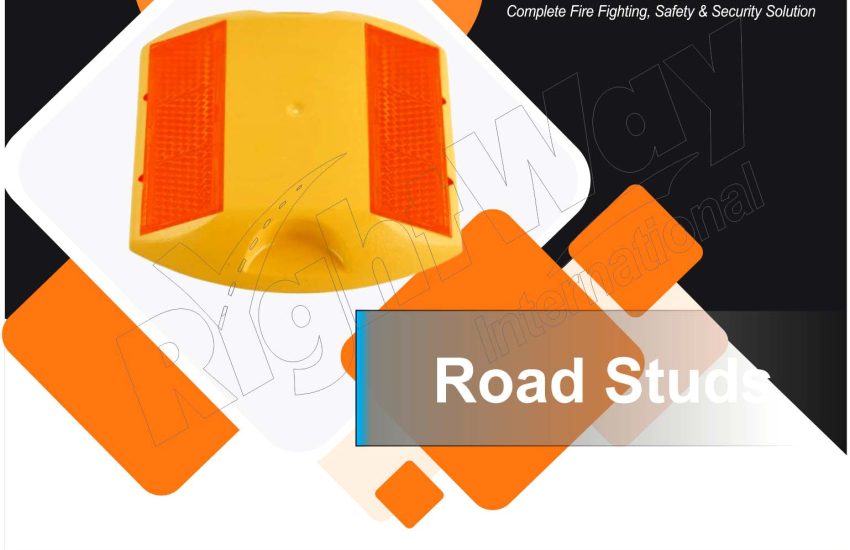Road stud , often referred to as cat’s eyes, are essential Safety devices designed to improve visibility and guide drivers along roads and highways. By providing clear visual cues, road stud help delineate lanes, mark road edges, and enhance overall road safety, especially during nighttime and adverse weather conditions. This article explores the purpose, types, benefits, and best practices related to road stud.
Purpose of Road Stud
- Guiding Traffic
- Lane Marking: Road studs help define lane boundaries, especially on highways and multi-lane roads. They provide a visual guide to help drivers stay within their lanes and navigate safely.
- Edge Marking: They mark the edges of roads, particularly on poorly lit or rural roads, helping drivers avoid veering off the road.
- Enhancing Visibility
- Nighttime Visibility: Road studs are designed to be highly visible at night and in low-light conditions, providing a clear visual guide to drivers.
- Adverse Weather: They remain effective during fog, rain, or snow, where road markings might be less visible.
- Improving Safety
- Accident Prevention: By clearly marking road boundaries and lane separations, road studs reduce the risk of accidents caused by confusion or misdirection.
- Guidance in Complex Areas: They are particularly useful in areas with complex road layouts, such as curves, intersections, and merge points.
Types of Road Stud
- Reflective Road Stud
- Retro-re reflective: These studs use reflective materials that bounce light from vehicle headlights back towards the driver, enhancing visibility at night.
- Various Colors: Reflective road studs come in different colors, such as white, red, and amber, to denote specific road markings and guide drivers.
- Solar-Powered Road Stud
- Self-Lighting: Equipped with solar panels, these road studs absorb sunlight during the day and emit light at night. They provide consistent visibility without the need for external power sources.
- Energy Efficient: Solar-powered studs are energy-efficient and require minimal maintenance.
- Mechanical:
- Pop-Up Studs: These studs are designed to pop up from the road surface when vehicles pass over them, providing temporary, high-visibility guidance.
- Durability: Mechanical road studs are durable and designed to withstand heavy traffic and harsh weather conditions.
- Embedded:
- Flush with Road Surface: These studs are embedded into the road surface, providing a low-profile, permanent solution for lane marking and road edge delineation.
- Minimal Maintenance: Embedded studs require less maintenance compared to other types, as they are less prone to damage from road traffic.
Benefits of Road Stud
- Enhanced Safety
- Accident Reduction: By improving visibility and guiding drivers, road studs help reduce accidents and ensure safer road conditions.
- Better Navigation: They assist drivers in navigating through complex or poorly marked roadways.
- Increased Visibility
- Nighttime and Low-Light Conditions: Road studs provide crucial visibility during nighttime and adverse weather conditions, where road markings might be less discernible.
- Guidance in Fog and Rain: Their reflective properties enhance visibility even in challenging weather conditions.
- Cost-Effective Solution
- Low Maintenance: Many types of road studs, such as embedded and solar-powered models, require minimal maintenance, making them a cost-effective choice for road safety.
Best Practices:
- Proper Installation
- Correct Placement: Install road studs at key locations, such as lane boundaries, curves, and road edges, to maximize their effectiveness.
- Follow Standards: Adhere to local or national standards for road stud placement and usage to ensure compliance and effectiveness.
- Regular Maintenance
- Inspect for Damage: Regularly check road studs for damage or wear and replace any that are broken or missing.
- Clean Reflective Surfaces: Keep reflective surfaces clean to maintain optimal visibility.
- Consider Traffic Conditions
- Select Appropriate Type: Choose the type of road stud that best suits the traffic conditions and road environment. For example, solar-powered studs are ideal for areas with limited street lighting.
Conclusion
Road stud are a vital component of road safety and navigation, providing clear visual cues that enhance driver visibility and guide vehicle movement. By understanding the different types of road stud and their benefits, and by following best practices for installation and maintenance, road safety can be significantly improved, reducing the risk of accidents and ensuring smoother, safer travel.


